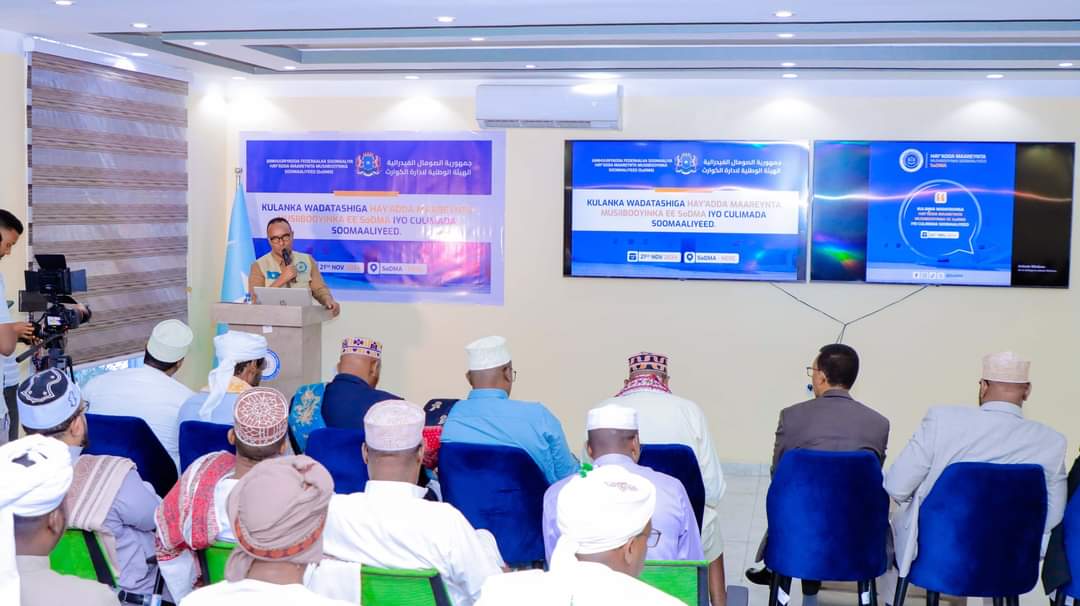Addis Abeba – With vital export items languishing due to the chronic scarcity of containers and other obstacles, the government has unveiled a plan to leverage digital solutions to affectedly track and manage available containers in the country within the next three months.
This information was disclosed during a meeting convened by the Ethiopian Maritime Authority on 29 April with coffee exporters, shipping agents, and other stakeholders to discuss the ongoing containerization problem.
Dengue Boru, the State Minister for Transport and Logistics, explained during the discussion that despite coffee being the primary source of foreign currency for Ethiopia, the country is not realizing the anticipated revenue from this commodity.
To enhance export earnings, Dengue emphasized the necessity of prioritizing major export items such as coffee in containerization efforts.
This strategic allocation aims to align export revenue generation with the government’s outlined plan.
The Ministry of Trade and Regional Integration reports that Ethiopia generated $1.53 billion from foreign trade in the initial six months of the current fiscal year. However, this amount fell short of the targeted $2.39 billion.
The leading contributors to Ethiopia’s export earnings include coffee, yielding $571.47 million, followed by flowers at $225.64 million, and pulses at $175.87 million. Moreover, oilseeds and Khat also made notable contributions of $109.68 million and $89.61 million, respectively.
During the recent meeting, Abdulber Shemsu, the Director General of the Ethiopian Maritime Authority, articulated ongoing efforts to address the containerization issue at the policy level.
Additionally, he revealed that the development of digital software to manage available containers will be completed within the next three months.
Gizat Worku, general manager of the Ethiopian Coffee Exporters Association, acknowledges the enduring challenge of container shortages, which has persisted since the onset of the COVID-19 pandemic.
Recognizing the critical importance of sustaining the import and export activities of the country, Gizat emphasizes that the Association is collaboratively engaged with relevant authorities to address this scarcity of shipping containers.
“This endeavor entails the strategic utilization of containers that sit idle or repurposing containers that have been left unused due to tax-related issues,” Gizat conveyed to Addis Standard.
The global shortage of shipping containers originated when manufacturers shuttered their factories during the COVID-19 pandemic, leading to reduced production. Currently, over 95% of containers are manufactured in China, with three state-owned enterprises holding significant market dominance.
As a result of this scarcity, the Ethiopian Shipping and Logistics Services Enterprise (ESLSE) procured over 3,000 additional shipping containers in 2021.
According to the container shipping outlook report, the shortage of shipping containers, which emerged post-pandemic, is anticipated to persist into 2024 due to the substantial demand exceeding the available supply.
The director general also revealed that the Authority is collaborating with the Enterprise to address the current issue concerning container storage capacity.
There are eight dry ports utilized for container storage across the country, with the dry port facility situated in Modjo town responsible for handling 90% of inbound shipping containers.

In addition to these challenges, transportation and logistics authorities have highlighted the significant impact of the ongoing security crisis in the Red Sea on the export and import activities of the country.
Last month, the Enterprise revealed that “major shipping companies have reduced their visits to the region, with some suspending operations altogether” due to the precarious conditions prevailing in the Red Sea. This situation, according to the Enterprise, has led to logistical challenges concerning both the time and expenses associated with shipments to and from Ethiopia.
The state-owned shipping company further explained that numerous cargo vessels, previously essential to its operations through collaborative agreements, have refrained from docking at the Djibouti port due to the increased risks in the Red Sea vicinity.
With major shipping lines avoiding the area, the enterprise emphasized the growing difficulties in exporting Ethiopian products, notably coffee, to global markets. According to reports, the recent attacks in the Red Sea area have left approximately 30,000 quintals of coffee stranded at Djibouti ports.
Gizat also informed Addis Standard that the assaults perpetrated by Yemen’s Houthi rebel group against shipping companies have adversely impacted the country’s export performance. “Shipping companies affiliated with Israel and its allies have ceased utilizing the Red Sea route, resulting in a shortage of available shipping options.”
Additionally, Gizat noted that the alternative route through South Africa entails increased distance and associated costs for each container transported.
As a response, ESLSE has chosen to offer freight services through its own vessels. Additionally, authorities are considering the acquisition of new vessels as an alternative solution.
Two weeks ago, officials from the Enterprise, including its CEO, Beriso Amelo, traveled to China and engaged in discussions with shipbuilding companies to explore the potential procurement of new vessels. AS









